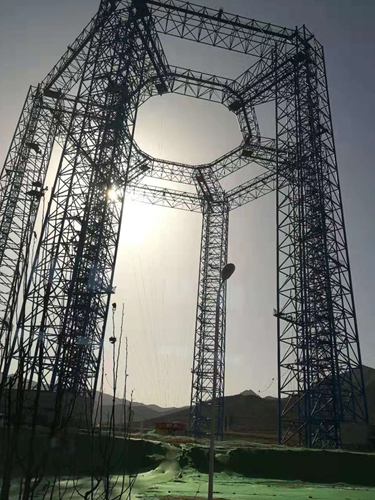
The comprehensive test ground for extraterrestrial landing in North China's Hebei Province. (Photo: Global Times)
China successfully conducted a Mars landing test of the country's red planet lander on Thursday in North China's Hebei Province, marking a key progress in the country's first mission to Mars which is expected to lift off in 2020.
The Thursday event, which tested the lander's ability to hover over the Martian surface and automatically avoid obstacles and uneven terrain, was carried out in Huailai, Hebei, at a site which is believed to be Asia's largest testing field for landing extraterrestrial spacecraft.
Zhang Kejian, director of the China National Space Administration (CNSA) oversaw the test, and around foreign representatives from various embassies, the European Union, the African Union to China and international organizations including the Asia-Pacific Space Cooperation Organization, were invited by CNSA to observe the test.
A Global Times reporter saw the lander successfully avoid obstacles including rocks and pits on the landing site and make adjustments before safely touching down.
The techniques the Mars lander applied are similar to the country's lunar landers, scientists at the test site told the Global Times.
Suspension wires were hooked to the lander during the test to simulate Martian gravity, which is one third of the Earth's, and to control the speed of landing, Pang Zhihao, a Beijing-based expert in space exploration, told the Global Times.
China has signed more than 140 space cooperation agreements with 45 countries and international organizations in the past 60 years, according to a CNSA press release sent to the Global Times on Thursday.
International cooperation projects include the China-France Oceanography Satellite, and the latest lunar probe mission Chang'e-4 which included the participation of Germany, Sweden, and Saudi Arabia.
China's Mars probe mission is expected to be launched by 2020, and to land on the red planet before 2021. The probe is temporarily named Mars-1, said Ye Peijian, who is known as the father of Chang'e lunar probes, and an academician of the Chinese Academy of Sciences. He is also a chief scientist for the country's space science and deep space missions, the Xinhua News Agency reported in October.
China's mission to Mars includes an orbiting space craft, landing craft and a detachable rover to roam the Martian surface, all in one mission, said Ye. "If we succeed, this will mark a first in the world's Mars expedition history."


